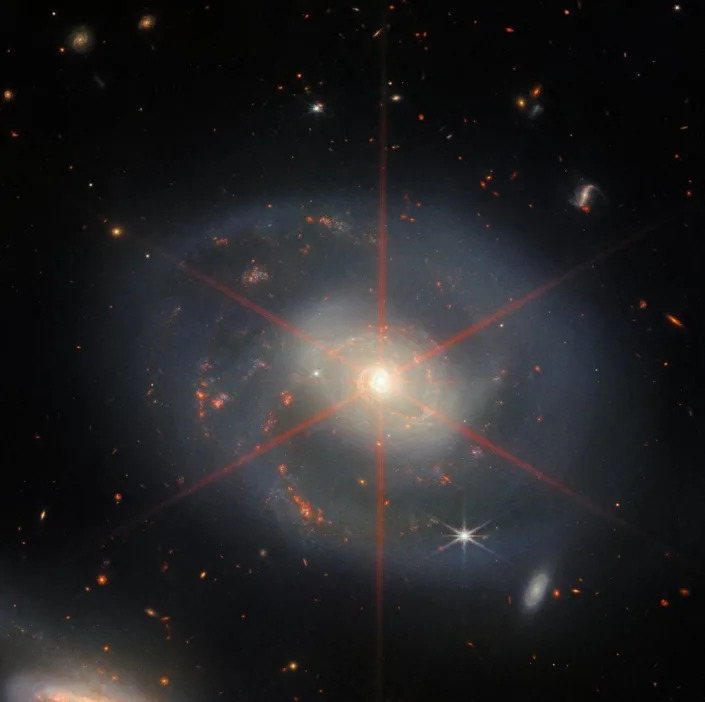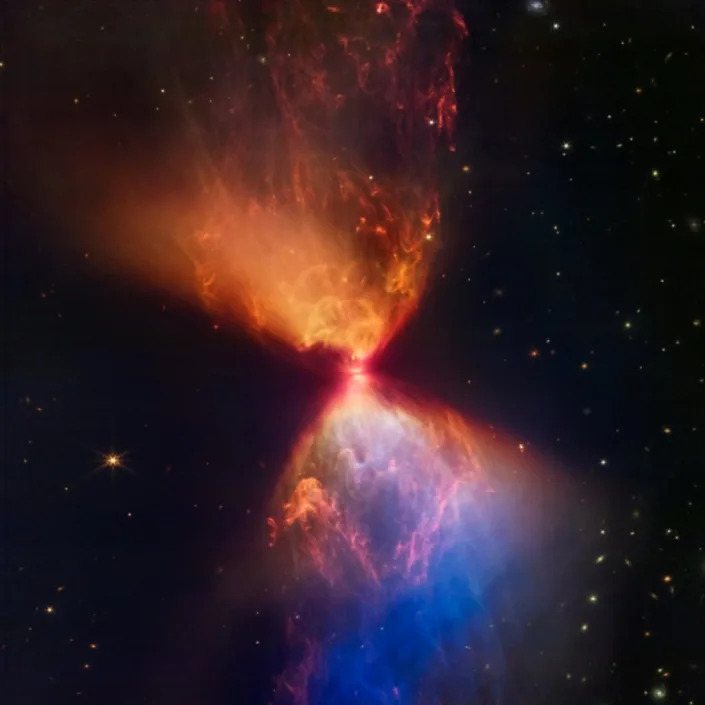Melissa T. Miller
Thu, December 22, 2022
The James Webb Space Telescope continues to deliver awe-inspiring images and insights into the universe. Its mirror is six times the size of the Hubble Space Telescope, which has been taking stellar pictures since 1990. But it’s not just about size. The new telescope records infrared wavelengths rather than visible light so it can see farther and more clearly. Older stars appear as bright eight-pointed spikes in the Webb telescope pictures below due to the way the images are taken. But it also adds to the ethereal nature of each image as we peer farther and farther into infinity.
A Holiday Galaxy
The James Webb Space Telescope shared this festive image just in time for the holiday season. Galaxy NGC 7469‘s spiral looks like a wreath, complete with glowing lights. The large red starburst is actually made up of spikes from the telescope’s hexagonal mirrors caused by the light from the galaxy’s center. The gas and dust shines brightly as it falls into a black hole, but doesn’t it look lovely? Scientists are excited about the star-forming regions they can now see thanks to the telescope’s infrared cameras. But it’s also the perfect image for this year’s holiday card.

ESA/Webb, NASA & CSA, L. Armus, A. S. Evans
An Illuminating Protostar

NASA, ESA, CSA, and STScI. Image processing: J. DePasquale, A. Pagan, and A. Koekemoer (STScI)
A new star, “only” about 100,000 years old, is forming in the neck of this cosmic hourglass. The protostar L1527 itself is hidden in this view, but the light it creates illuminates clouds of gas and dust that are being sucked inwards. The vivid pinks, oranges, and blues are only visible in the infrared light of the James Webb Space Telescope. As the star ages, it gathers these nearby materials into its accretion disk, gaining mass and eventually reaching the size and stability of a full star.
No comments:
Post a Comment